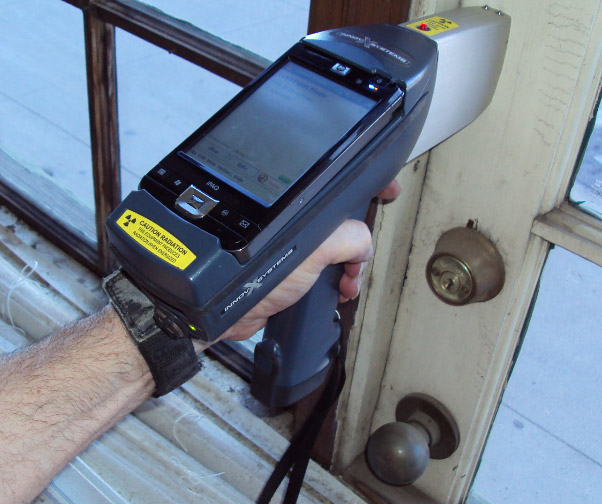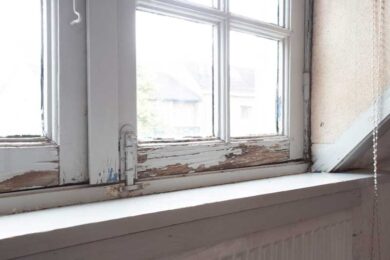Ideal Practices for Ensuring Safe and Complete Lead Violation Abatement
Attending to lead offense abatement requires a multi-faceted approach to guarantee both safety and compliance. It's the last clearance procedure, including extensive evaluations and laboratory screening, that absolutely verifies a lead-free atmosphere, ensuring lasting safety and security. Exactly how do these practices adjoin to assure extensive lead abatement?

Preliminary Assessment
Performing a preliminary analysis is an important very first step in lead infraction abatement. This stage encompasses a thorough examination of the home to identify the existence, extent, and certain locations of lead-based dangers. Qualified specialists, such as certified lead examiners or risk assessors, must perform a detailed site assessment, making use of tools like X-ray fluorescence (XRF) analyzers to properly spot and gauge lead concentrations in paint, dust, dirt, and water.
The assessment should additionally include an evaluation of the structure's history, previous reports, and any kind of complaints or health and wellness concerns reported by occupants - Lead Removal Contractors. Documenting the searchings for meticulously is important, as these documents form the basis for establishing a reliable abatement technique. A detailed assessment also includes tasting and research laboratory analysis, which are crucial to validate the presence of lead and guide subsequent actions
Moreover, it is essential to interact the results transparently to all stakeholders, consisting of homeowner, renters, and regulative authorities. By making sure that the first evaluation is carried out with precision and rigor, experts can lay a solid foundation for a targeted and effective lead abatement process, eventually protecting public health and wellness and making sure conformity with regulatory standards.
Appropriate Containment
Proper control is essential to protect against the spread of lead impurities during abatement tasks. Efficiently managing control lessens the risk of lead dirt and debris moving to non-work areas, therefore securing both the atmosphere and people outside the instant job zone.

Routine evaluations of the control area are needed to check for violations or weaknesses in the obstacle. Any determined concerns ought to be without delay dealt with to keep the integrity of the control. By sticking to these methods, reduction projects can successfully regulate lead contamination and reduce affiliated health dangers.
Employee Protection
Making sure employee see here protection is critical throughout lead reduction projects to stop job-related exposure to harmful lead fragments. Important procedures consist of using personal protective devices (PPE) such as respirators, handwear covers, and full-body matches specifically developed to block lead dirt and fumes. Employees need to undergo extensive training on the right use and upkeep of PPE, consisting of healthy screening for respirators to ensure maximum effectiveness.
Engineering controls, such as regional exhaust air flow systems, are vital in decreasing air-borne lead focus in the job environment. Administrative controls ought to likewise be executed, including limiting the duration of exposure and rotating employees to lower individual exposure times. Normal clinical surveillance and biological tracking are crucial for very early discovery of lead absorption, making it possible for prompt treatment and therapy.
Moreover, establishing a purification procedure is crucial. Workers should follow stringent decontamination treatments prior to breaks and at the end of their shift to stop lead dust from being carried outside the job location. This includes comprehensive hand and face washing with lead-specific cleaner and altering out of contaminated clothing.
Thorough Clean-up
Preserving a safe job atmosphere extends past employee protection and includes precise cleaning to make certain lead bits are thoroughly gotten rid of from the site. The process of careful cleanup is critical in protecting against the recontamination of the mellowed out area and guarding both present and future occupants.
To attain an extensive cleaning, all workplace need to be methodically decontaminated. This entails the use of specialized HEPA (High-Efficiency Particulate Air) vacuum and wet-wiping strategies to capture and get rid of fine lead dirt that might have worked out on surface areas. It is crucial to clean all horizontal surface areas, including floorings, home window sills, and countertops, along with vertical surfaces that might have entraped lead bits.
Employees must use ideal personal protective tools (PPE) throughout cleanup to prevent direct exposure to residual lead dust. Utilized cleansing materials such as wipes, sponges, and mop heads must be disposed of according to harmful waste disposal laws.

Final Clearance
Last clearance is the crucial check out this site concluding phase of lead reduction that establishes whether the website is secure for reoccupation. This essential action entails thorough examination and screening to confirm that all lead dangers have been efficiently eliminated.

Last clearance testing not only shields future passengers however also makes certain conformity with local, state, and government guidelines. Furthermore, it serves as a recorded validation of the reduction specialist's adherence to industry ideal methods. Making sure a comprehensive and effective final clearance is crucial in securing public health and fostering rely on the abatement procedure.
Conclusion
Making sure safe and complete lead violation reduction demands a diverse strategy encompassing first assessments with sophisticated discovery methods, efficient control strategies, rigid employee protection procedures, and thorough cleanup procedures. The last clearance stage, featuring in-depth examinations and laboratory testing, is critical to confirm compliance with EPA standards. Adherence to these finest techniques assures a safe atmosphere for passengers, minimizes health risks, and supports regulative needs, therefore promoting public health and security in lead-affected areas.